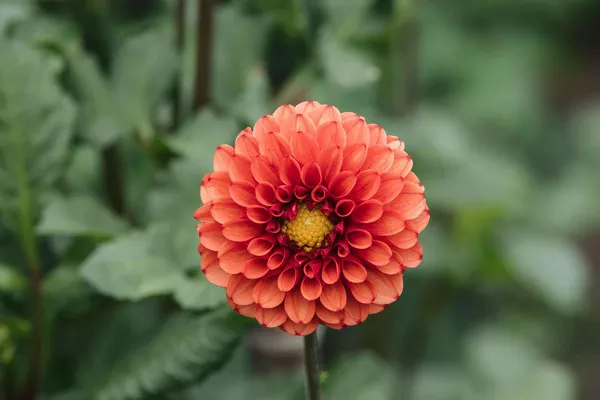Brassicas, which include vegetables such as cabbage, broccoli, and kale, are a staple in many home gardens and a popular choice among gardeners. These nutritious and versatile plants, however, are highly susceptible to various pests that can wreak havoc on your crop. To ensure a bountiful harvest, it’s essential to employ effective pest control measures.
Understanding the Brassica Family
Before delving into pest protection methods, let’s familiarize ourselves with the diverse Brassica family. This group encompasses a variety of vegetables, including broccoli, cauliflower, Brussels sprouts, kale, collard greens, and many types of cabbage. Brassicas are known for their nutritional value and adaptability to different growing conditions. However, their popularity among garden pests makes them vulnerable to a range of unwanted visitors.
Identifying Common Brassica Pests
To effectively protect your brassicas from pests, it’s essential to recognize the specific culprits that threaten your plants. Here are some of the most common brassica pests:
Cabbage Worms: These green caterpillars are the larvae of white butterflies and can quickly devour your brassica leaves.
Aphids: Tiny, soft-bodied insects that feed on the sap of brassicas, causing stunted growth and deformation.
Flea Beetles: Small, jumping beetles that leave tiny holes in leaves and can transmit diseases.
Slugs and Snails: These mollusks feed on brassica leaves and can decimate entire crops if left uncontrolled.
Cabbage Loopers: Similar to cabbage worms, these caterpillars chew on leaves and can be quite destructive.
Cabbage Root Fly: The larvae of this fly feed on the roots of brassicas, leading to wilting and eventual death.
Diamondback Moths: These moths lay eggs on brassica leaves, and their larvae chew holes in the leaves, leaving them vulnerable to disease.
Now that we’ve identified the main culprits, let’s explore strategies to protect your brassicas from these persistent pests.
Cultural Pest Control Measures
Crop Rotation:
One of the most effective methods to deter pests is to rotate your brassica crops. Avoid planting brassicas in the same location for consecutive years. By changing the planting site, you disrupt the life cycles of pests that overwinter in the soil, reducing their population.
Companion Planting:
Utilize the power of companion planting to create a pest-repelling garden. Marigolds, for example, are known to deter nematodes, while planting aromatic herbs like mint, rosemary, or thyme alongside brassicas can help keep pests at bay.
Early Planting:
Start your brassica plants early in the season, before pest populations become a significant issue. This allows your plants to establish themselves and become more resilient before pests become problematic.
Selective Pruning:
Keep an eye out for damaged leaves or areas with an infestation of pests. Prune these areas to prevent the spread of pests throughout the plant. Proper disposal of pruned material is crucial to prevent further infestations.
Cleanliness:
Regularly remove weeds from your garden beds as they can harbor pests. Additionally, clean up garden debris and dead plant material, providing fewer hiding spots and breeding grounds for pests.
Mechanical Pest Control Measures
Hand-Picking:
If you notice a pest infestation on your brassicas, don’t hesitate to pick off the intruders. This method is particularly effective for large pests like cabbage worms and slugs. A daily inspection can help keep populations in check.
Row Covers:
Using row covers, especially in the early stages of growth, can be an excellent preventive measure. These lightweight, breathable fabrics create a physical barrier, preventing pests from reaching your brassicas.
Traps:
Employ traps to capture specific pests. For instance, yellow sticky traps are effective against aphids and whiteflies. Beer traps are a great option for controlling slugs and snails. Simply bury containers filled with beer to attract and drown these pests.
Biological Pest Control Measures
Beneficial Insects:
Encourage the presence of beneficial insects like ladybugs, lacewings, and parasitic wasps. These insects feed on common brassica pests and help maintain a balanced ecosystem in your garden.
Nematodes:
Consider introducing beneficial nematodes into your soil. These microscopic organisms prey on the larvae of soil-dwelling pests like cabbage root fly, effectively reducing their numbers.
Bacillus thuringiensis (BT):
BT is a naturally occurring bacterium that acts as a biological pesticide. It specifically targets caterpillar-like pests such as cabbage worms and cabbage loopers. It’s safe for humans, pets, and beneficial insects.
Chemical Pest Control Measures
While organic and biological methods are preferred for pest control, chemical solutions can be used as a last resort. When using chemical pesticides, it’s crucial to follow label instructions carefully, wear protective gear, and apply them judiciously to minimize their impact on beneficial insects and the environment.
Conclusion
Protecting your brassicas from pests requires a multi-faceted approach. By combining cultural, mechanical, biological, and, if necessary, chemical control measures, you can effectively defend your crops and ensure a bountiful harvest of healthy, pest-free vegetables. Regular monitoring and swift action are key to preventing pests from causing irreparable damage to your brassica plants.


